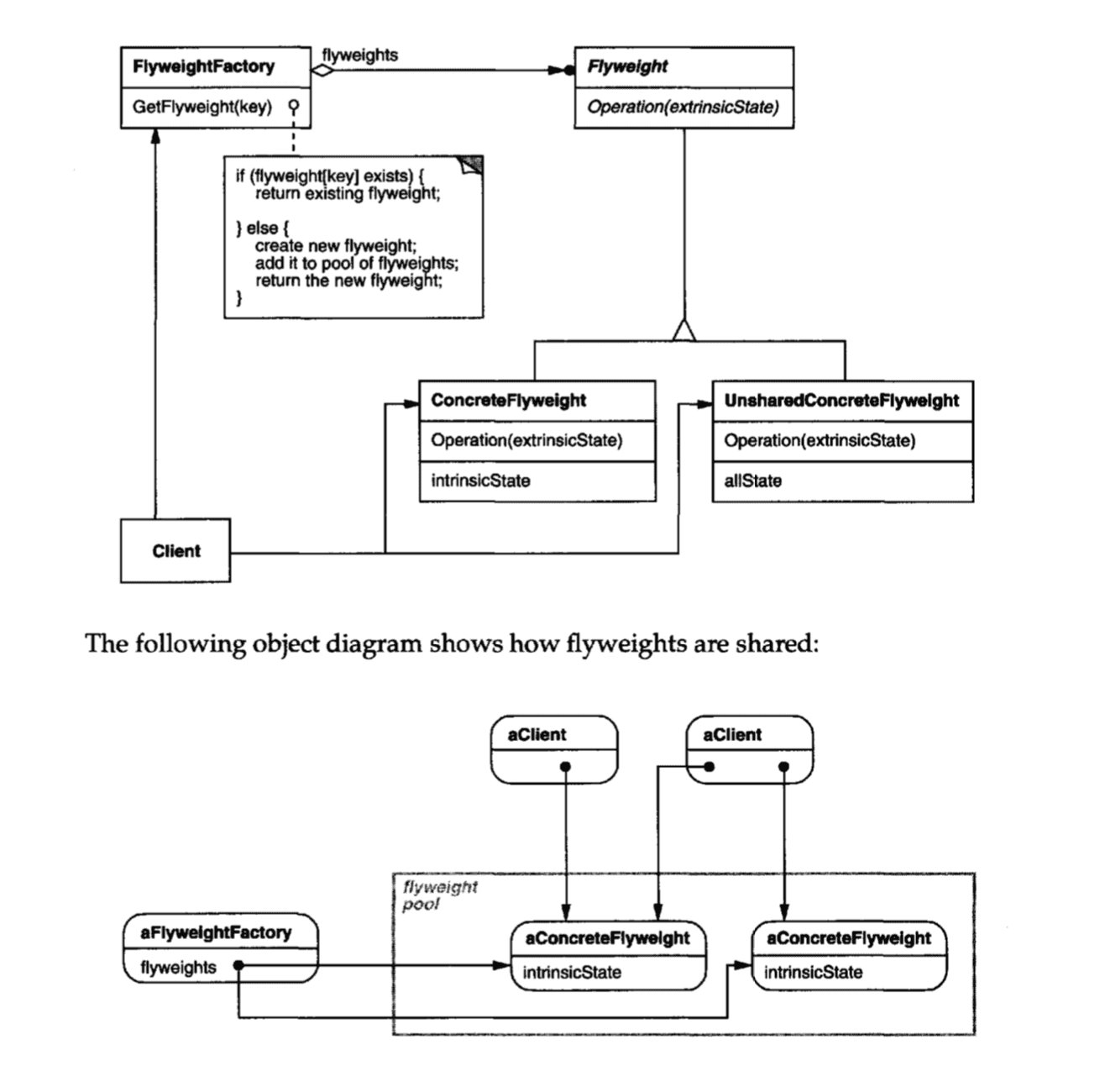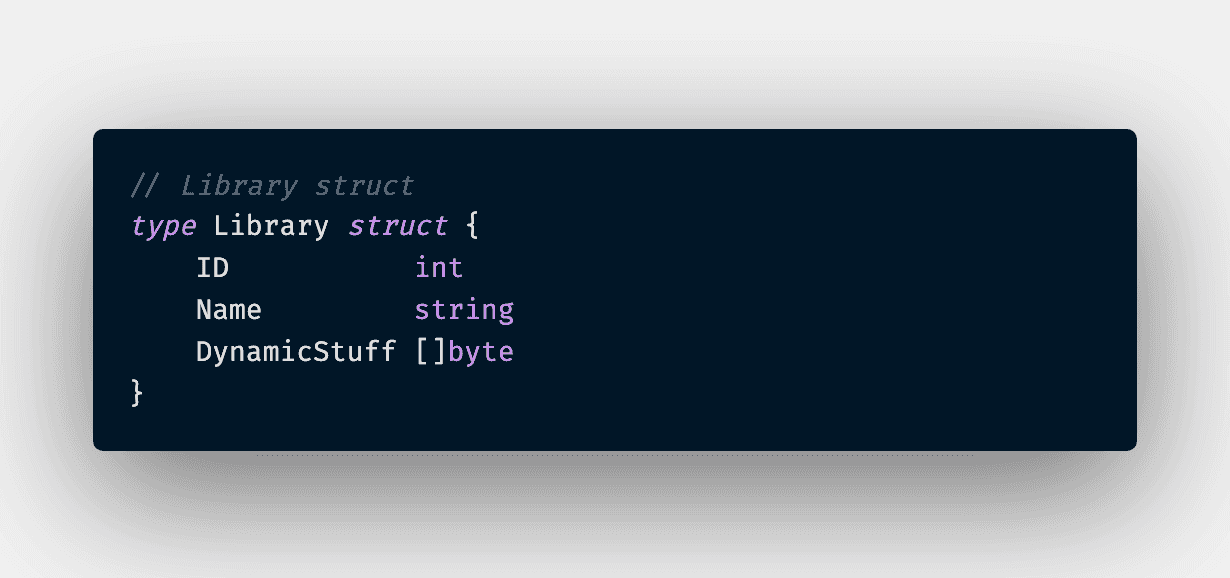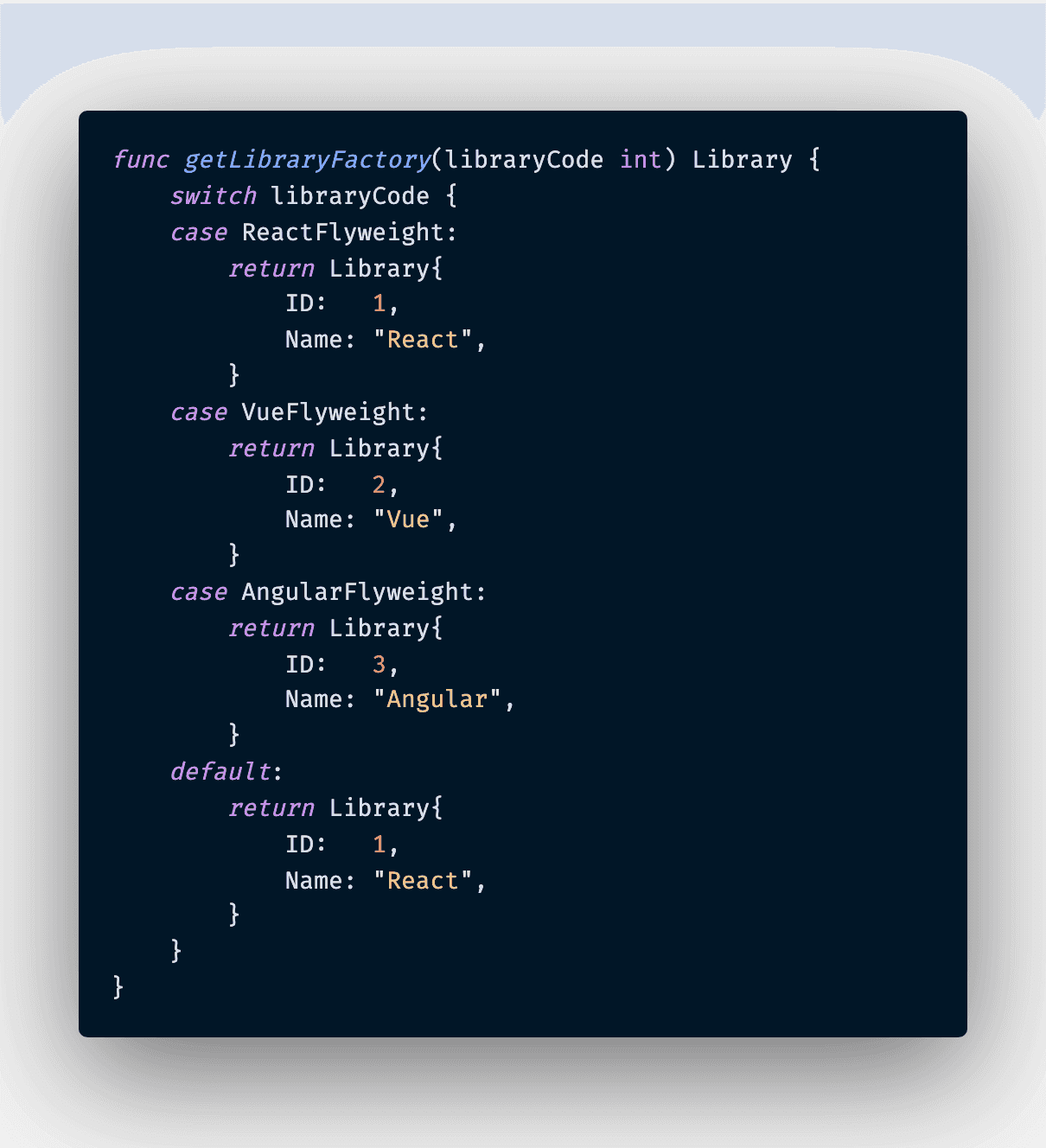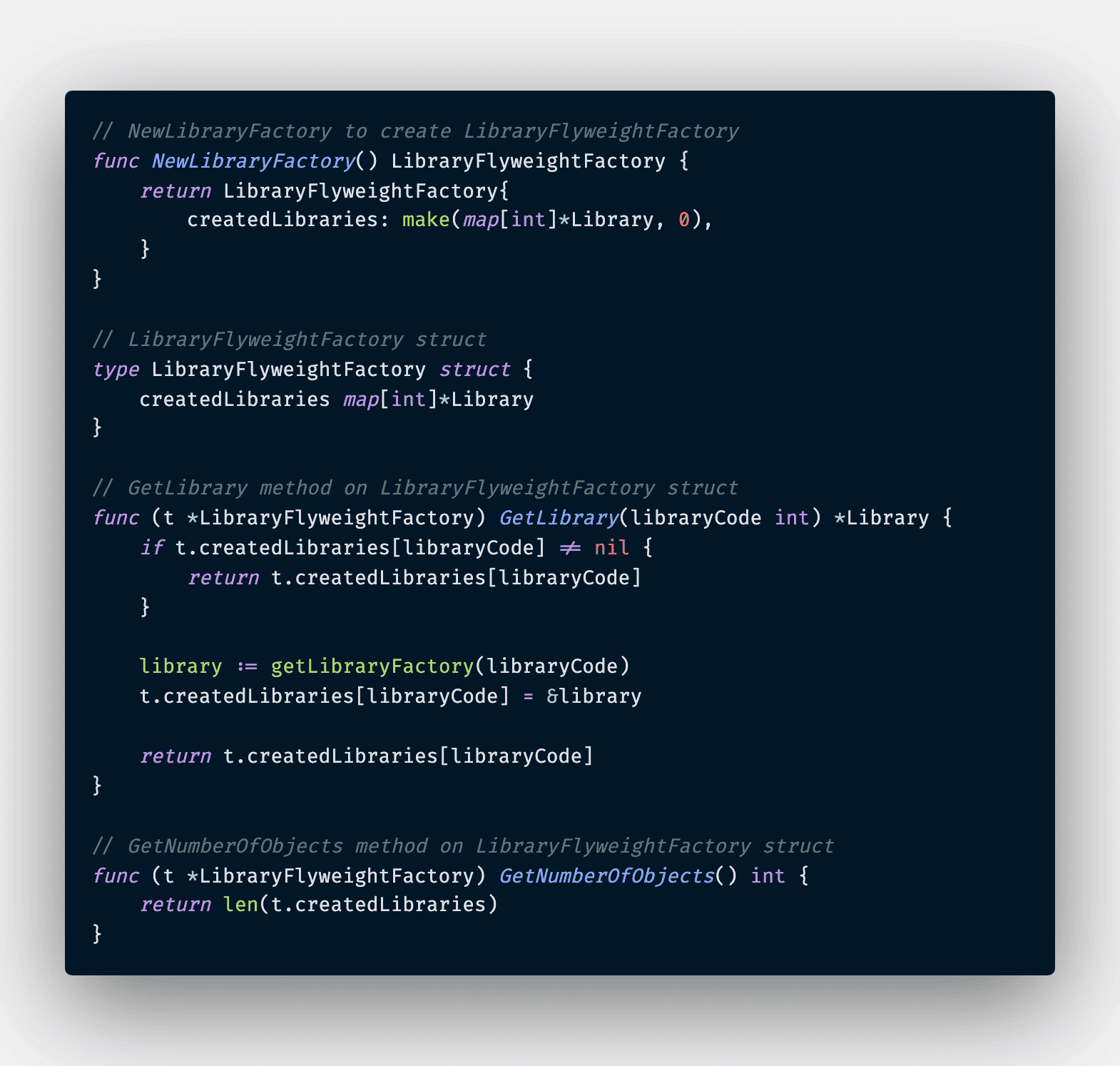Flyweight Pattern
Use sharing to support large numbers of fine-grained objects efficiently
Applicability
- An application uses a large number of objects
- Storage costs are high because of the sheer quantity of objects
- Most object state can be made extrinsic
- Many groups of objects may be replaced by relatively few shared objects once extrinsic state is removed.
- The application doesn't depend on object identity. Since flyweight objects may be shared, identity tests will return true for conceptually distinct objects.
Let's put the definition above into practice. We have a list of three library that will be used differently at run time, the libraries' state can be made extrinsically such as name and ID. There is no need to re-create these fields all over again to save memory footprint. We would need a factory and cache pool to alleviate that. First up, we want to have a library structure as below
Then, we want to define a function that create different initial library state like below
Last but not least, we need to implement a Library factory that contain the cache that store already created library and couple of utility methods to verify the success of application.
And there we have a complete implementation of Flyweight Pattern in Go. With this library, memory can be saved a ton at scale in tradeoff a more complexity added to the codebase. Hence, this pattern should be used with caution
P/s: The accompany code is included in this PR 😊
Happy coding 😎



